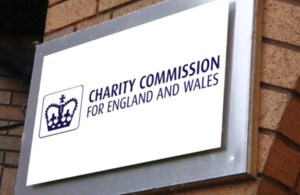Charity land: register it or risk losing it
Stephen Roberts looks at where a charity owns unregistered land.

First published by Solicitors Journal on 14 January 2014, and reproduced by kind permission
Charity trustees have fiduciary duties towards their charity which means that they have a responsibility to protect the charity’s assets, including any land it owns. The risk of a charity ‘losing’ land may sound unlikely however it is not uncommon. Some charities have land that is unregistered and consequently at a potentially greater risk of loss than registered land. This may arise for a variety of reasons such as trustees failing to monitor the boundaries of the land (eg through maintenance of the line offences, walls or hedges) or because they are simply unsure of precisely what they own. This may be due, for example, to either the complicated ‘jigsaw’ of title deeds making up the title to the land or may be because the deeds contain a description of the land by reference to physical features that no longer exist.
Consequently, when a charity does look to register its land it may find that someone else has already done so. This situation can arise because, if land holdings are not supervised by trustees, a third party may build up the required period to make a claim for adverse possession of it, or interests over it. In addition, if the land is unregistered, the Land Registry will not hold any ownership details to enable it to serve notice on the owner(s) of any such applications it receives. Consequently, the charity will not necessarily have the opportunity to seek to oppose the application.
Conversely, if the charity has registered its land and an application is made to the Land Registry by a third party, it will serve notice on the charity, giving it the opportunity to object to the application and, assuming that it does so within the prescribed response time, this will now normally defeat the application, save for in some transitional cases. In addition, any such successful objection would interrupt and therefore effectively stop the third party building up the required period of adverse possession, setting the clock for any further attempted application back to zero.
Consequently, a registered land owner is better protected than an unregistered one in this respect, provided its address for notification is kept current, and this is a protective measure that trustees should consider taking.
The risk in not doing so is that the charity may find that the value of the land has diminished. For example, if pieces of land have been ‘lost’ and/or the charity can only obtain registration of it by accepting the registration of adverse rights over it (eg a right of way), this may adversely impact on the value of the land eg for development . Because trustees have fiduciary duties to their charity, if they allow this to happen it can be indicative of a breach of their duties to protect the charity’s assets. Where this is the case this could lead to potential regulatory action and, depending on the circumstances of the individual case, action to obtain restitution for the charity. Such steps might include requiring the trustees to account to the charity for any financial loss the charity has suffered as a consequence and may even extend to requiring removal and replacement of members of the trustee body.
Voluntary registration of a charity’s land at the Land Registry can serve as one of a number of simple but valuable preventative means of safeguarding charity assets, and can help trustees to discharge their fiduciary duties in this respect.